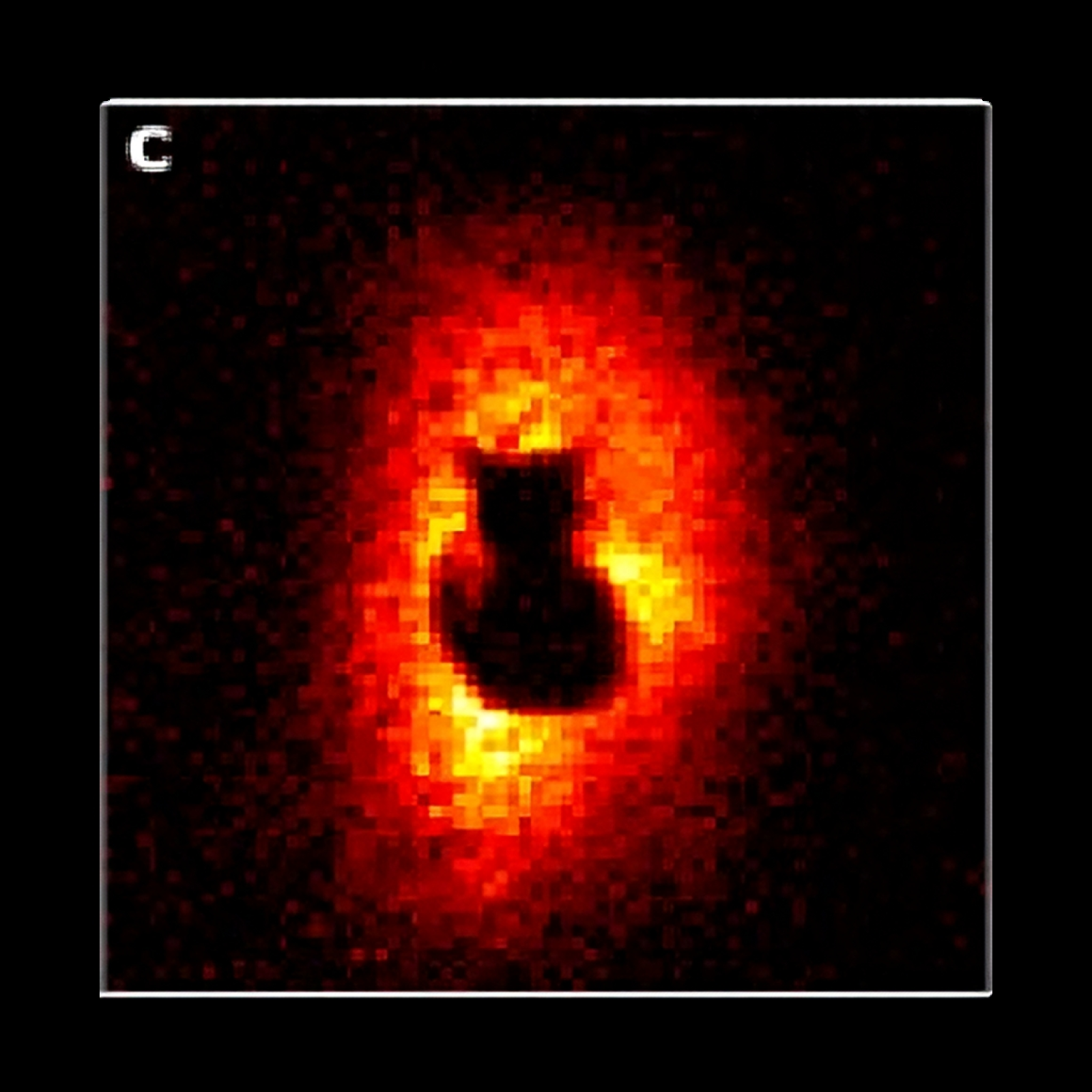Follow us on Google News (click on ☆)

Can you see the cat?
Experimental results, image of the correlations
© Chloé Vernière and Hugo Defienne.
Entangled photons are at the heart of many quantum photonics applications, such as computing or cryptography. Such photons can be created through spontaneous parametric down-conversion (SPDC) in a nonlinear crystal, a process in which a photon from a high-energy excitation laser (blue) is converted into two lower-energy entangled photons (infrared).
Some applications require specific quantum correlations between photons, making their control essential. To achieve this, one can, for instance, modify the properties of the excitation laser, particularly the spatial shape of the beam.
Exploring this possibility, scientists at the Paris Institute of Nanosciences (INSP, CNRS / Sorbonne University) propose a method to shape the spatial correlations between entangled photons into a given two-dimensional profile. The experiment consists of placing the shape to be encoded in the object plane of a lens located before the crystal and imaging it with a second lens on the camera (Figure a).
Without the crystal, the system is analogous to a conventional two-lens imaging system: one expects to observe a (reversed) intensity image of the object on the camera. In the presence of the crystal, however, the SPDC produces pairs of entangled photons in the infrared. If only these pairs are selected using a spectral filter, the intensity obtained on the camera is homogeneous and reveals no information about the shape (Figure b).
The image only reappears if one reconstructs an image from the spatial correlations between photon pairs (Figure c), i.e., by detecting the positions of each photon relative to those of their twins.

Figure: Experimental results.
a, Experimental setup.
b, Intensity image on the camera.
c, Correlation image.
The intensity image reveals no information about the object present, which can still be seen in the correlation image.
© Chloé Vernière and Hugo Defienne.
To reconstruct such an image, one must use a camera that is highly sensitive to light as well as custom algorithms to identify photon coincidences at each acquisition and extract the spatial correlations. The image of the object, initially carried by the blue laser beam, is thus transferred into the spatial correlations of the photon pairs. This makes it invisible in a classical intensity measurement (i.e., when taking a photo), but it appears during a correlation measurement.
Thanks to its flexibility and experimental simplicity, this approach could enable the development of new imaging protocols and find applications in fields such as quantum communication and cryptography. By working on the properties of the crystal, it might even be possible to encode multiple images in the same photon pairs beam, visible by moving the camera to different optical planes, thereby encoding more information. This study is published in Physical Review Letters.
Reference:
Hiding images in quantum correlations, Chloé Vernière and Hugo Defienne, Physical Review Letters, published on August 29, 2024.
DOI: 10.1103/PhysRevLett.133.093601
Open archive: arXiv